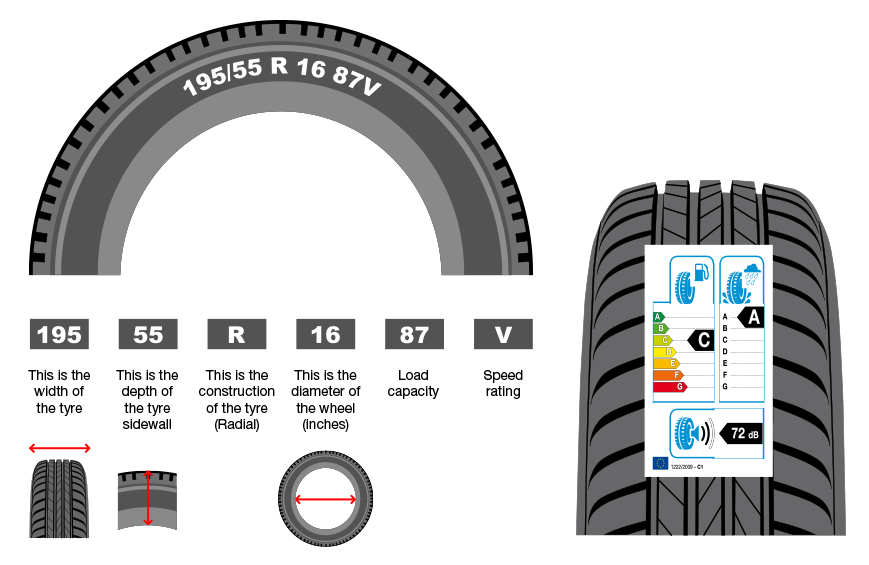
Understanding Tyre Labels
We have put this simple guide together to help you out.
Reading tyre labels
Four small patches of rubber, each about the size of your hand, are the only parts of your car in touch with the road, so having the right tyres – in good condition and correctly inflated – is very important for your safety. As such it is important to understand how to read a tyre.
Tyre width
This is the section width of the tyre measured in mm.
Tyre profile
The sidewall height of the tyre displayed as a percentage of the section width, or the aspect ratio.
Tyre diameter
The tyre is of radial construction.
The internal diameter of the tyre in inches.
Speed and load rating
Load index: how much weight the tyre can carry.
Speed index: max speed you should travel on the tyre.
Other speed ratings
S 113mph
H 130mph
V 149mph
Z 150+mph
W 168mph
Y 186mph
The speed rating of your tyre refers to the maximum speed your tyre is capable of maintaining, allowing you to fit a higher rating than your vehicle requires. Substituting with a higher speed rating means your tyres will not only retain greater speeds but you will also benefit from improved handling, grip and braking. Ranging from A (the lowest) to Y (the highest) with a few exceptions such as H (in between U and V) and Z (before W and Y), you can always increase speed ratings for improved performance, but you can never lower them below your vehicle recommendation.
Load index
Vehicles carrying higher loads need a higher load rated tyre and a higher inflation pressure. You can refer to the manufacturer's handbook. The tyres will carry the marking RF (Reinforced) or XL (Extra Load) The markings for low profile tyres differ slightly.
Example: 185/60 R 14 79 H
185 – 185 millimetres nominal section width
60 – Sidewall height is 60% of tyre nominal section width (a standard tyre is 82%)
R – Radial
14 – Means it fits 14' diameter wheel
79 – Load index
H – Speed rated to 130mph
The 'aspect ratio' (percentage of the sidewall height to tread nominal section width) – low profile tyres have a lower aspect ratio meaning more tread is on the road.
